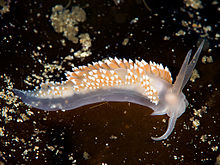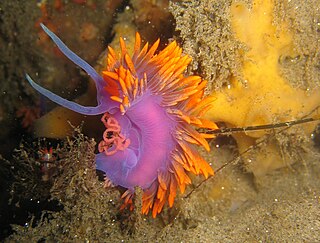
The Aeolidida is a taxonomic clade of sea slugs, specifically aeolid nudibranchs, marine gastropod molluscs in the clade Cladobranchia. They are distinguished from other nudibranchs by their possession of cerata containing cnidosacs.

Paracoryphella is a genus of sea slugs, specifically aeolid nudibranchs, marine gastropod molluscs in the family Paracoryphellidae.
Paracoryphella islandica is a species of sea slug, an aeolid nudibranch, a marine gastropod mollusk in the family Paracoryphellidae.

Coryphella is a genus of sea slugs, specifically aeolid nudibranchs, marine gastropod molluscs in the family Coryphellidae.
Gulenia borealis is a species of sea slug, an aeolid nudibranch, a marine gastropod mollusk in the family Flabellinidae.
Edmundsella albomaculata is a species of sea slug, an aeolid nudibranch, a marine gastropod mollusc in the family Flabellinidae.
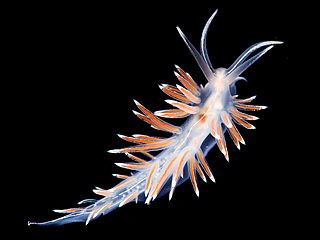
Fjordia is a genus of sea slugs, specifically aeolid nudibranchs, marine gastropod molluscs in the family Coryphellidae.

Fjordia chriskaugei is a species of sea slug, an aeolid nudibranch, a marine heterobranch mollusc in the family Flabellinidae.
Flabellinopsidae is a taxonomic family of brightly coloured sea slugs, specifically nudibranchs, marine gastropod mollusks.

Paracoryphellidae is a taxonomic family of brightly coloured sea slugs, specifically nudibranchs, marine gastropod mollusks.

Borealea is a genus of sea slugs, specifically aeolid nudibranchs, marine gastropod molluscs in the family Coryphellidae.

Edmundsella is a genus of sea slugs, aeolid nudibranchs, marine gastropod mollusks in the family Flabellinidae.

Paraflabellina is a genus of sea slugs, aeolid nudibranchs, marine gastropod mollusks in the family Flabellinidae.
Itaxia is a genus of sea slugs, specifically aeolid nudibranchs, marine gastropod molluscs in the family Coryphellidae.
Occidenthella is a genus of sea slugs, specifically aeolid nudibranchs, in the family Flabellinidae. The only described species is Occidenthella athadona, a combination named in 2017. It was originally described as Coryphella athadona in 1875. The genus name Occidenthella, from occidens, meaning "west" in Latin, refers to its distribution in the Western Pacific Ocean.
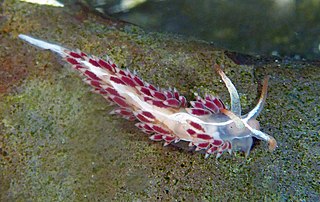
Orienthella is a genus of sea slugs, specifically aeolid nudibranchs, marine gastropod molluscs in the family Coryphellidae.

Gulenia is a genus of sea slugs, specifically aeolid nudibranchs, marine gastropod molluscs in the family Coryphellidae.
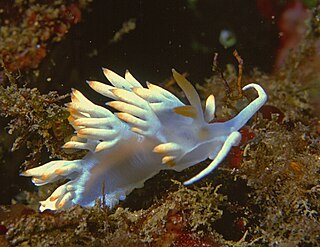
Luisella is a monotypic genus of sea slugs, specifically aeolid nudibranchs, marine gastropod molluscs in the family Samlidae. It's one species is Luisella babai.
Polaria is a genus of sea slugs, specifically aeolid nudibranchs, marine gastropod molluscs in the family Paracoryphellidae.

Ziminella is a genus of sea slugs, specifically aeolid nudibranchs, marine gastropod molluscs in the family Paracoryphellidae.
